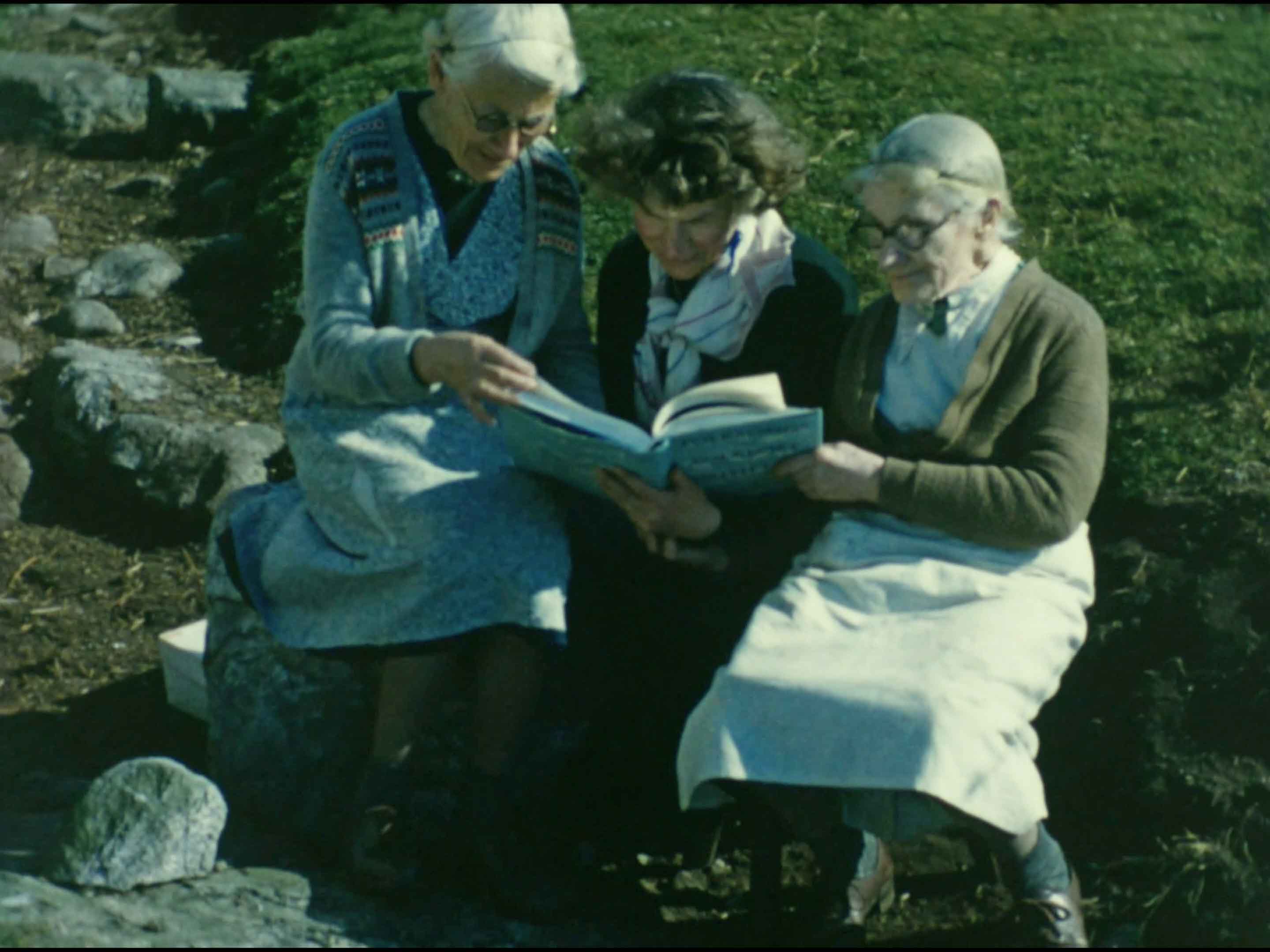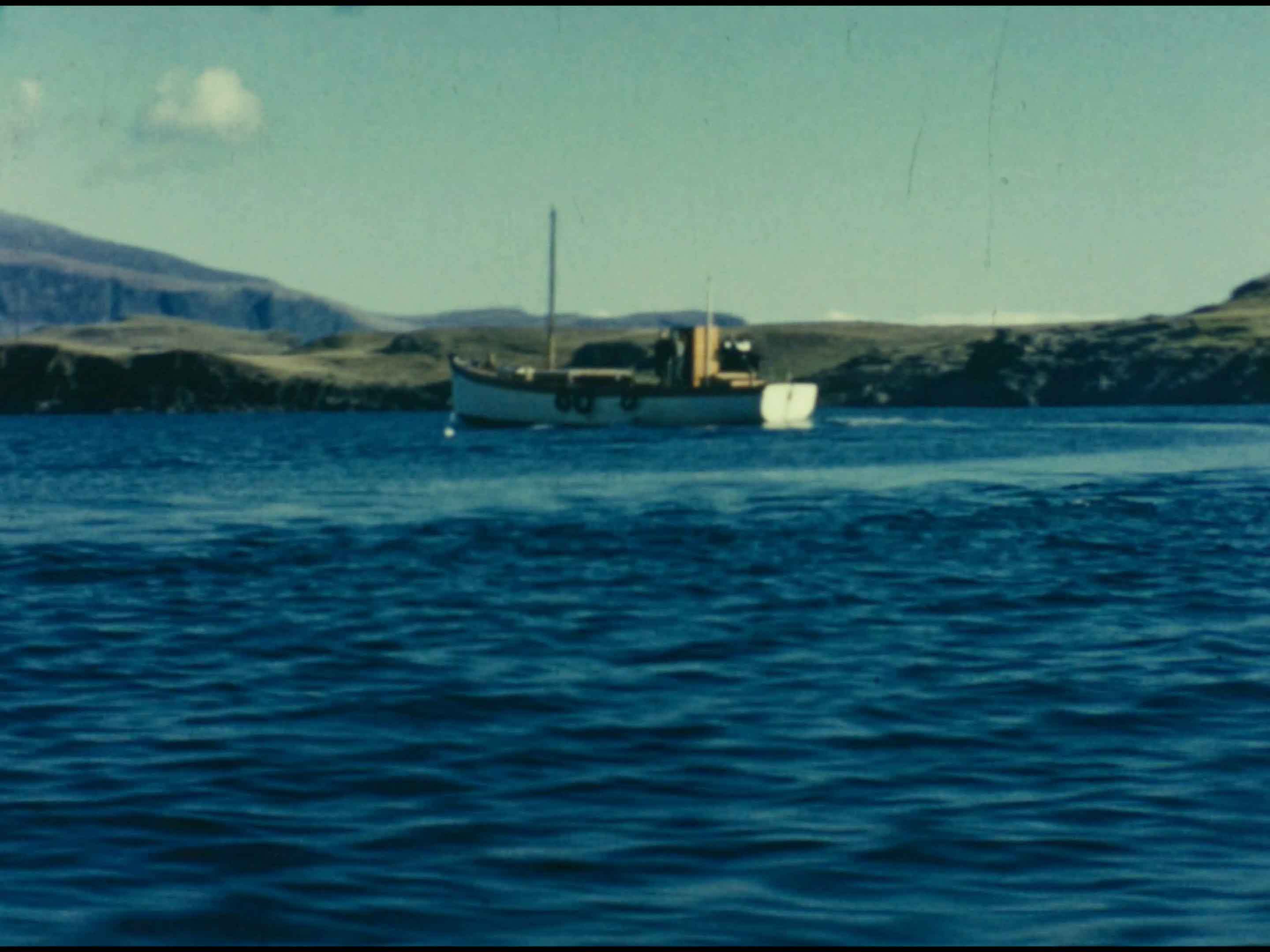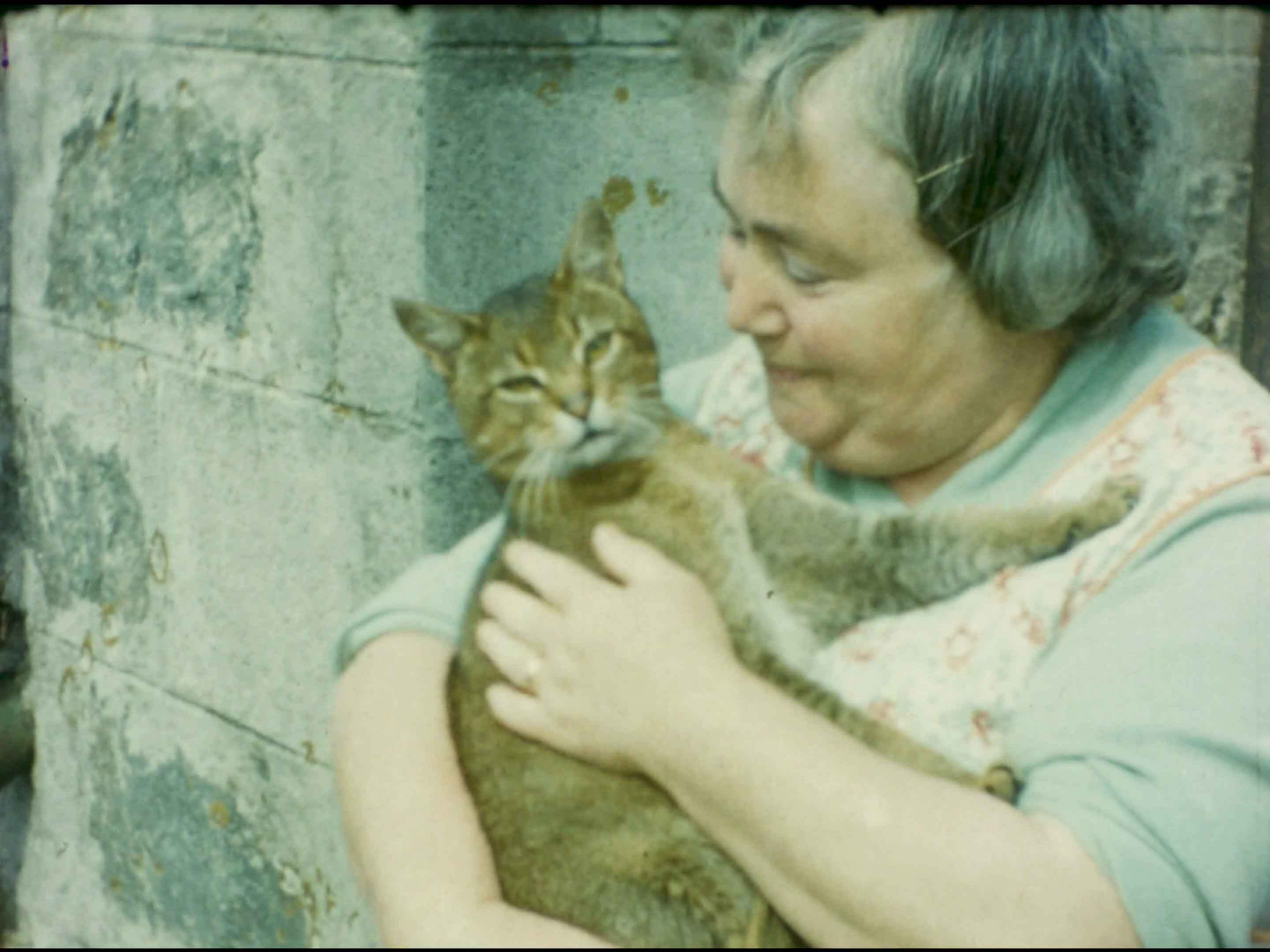Words by Lisa Rovner
Images courtesy of The Margaret Fay Shaw Film Collection, Canna House, NTS
The American ethnomusicologist and photographer Margaret Fay Shaw (1903-2004) and her husband, the Scottish historian and folklore scholar, John Lorne Campbell (1906-1996) lived in the Hebrides and dedicated their lives to documenting Hebridean song, story, image and folklore, including waulking songs or luadh in Gaelic. For centuries, the women in the Hebrides “waulked” or worked woollen cloth always accompanied by song. Waulking was a laborious process whereby women would beat the soaking wet, newly woven tweed against a table or board in order to shrink it. By pounding, pushing and pulling the cloth, the wool would soften and the weave tighten. The waulking board, cliath-luadh in Gaelic, was often just a door taken down from somewhere in the house. During waulking it became a large communal drum upon which all the women “played”. In John Lorne Campbell’s three- volume book Hebridean Folk Songs, he quotes Ada Goodrich-Freer describing waulking:
Five to each side they sit, and the dripping cloth is passed from hand to hand, while the moisture runs down the sloping boards to the floor. The movements of the women, at first slow, are in perfect rhythm, and, like all co-ordinated movements in these islands, their direction is deiseil — sunwards. It is only at first that we can observe the details of their operations, for soon the process becomes so rapid that we can distinguish nothing but the swaying of their figures, and the rapid thud of the cloth, keeping time to the rhythm of their song.
Margaret Fay Shaw arrived in South Uist in 1929 at 26 with a Gaelic dictionary, Martin Martin’s Tour of the Hebrides, a small harp, a pitch pipe, music paper and a keen interest in Gaelic song and tradition. She spent the next six years living with sisters Peigi (1874- 1969) and Màiri MacRae (1883-1972) in a croft. As she recounts in a recording:
My ambition was to learn Gaelic and to write down unpublished songs. From the very moment of my arrival I began to learn. First, to do without. Plumbing was the hardest. And I was a poor hand at trimming an oil lamp. There were no green vegetables and fruit which I thought so essential. My clothes were the wrong sort and my shoes always leaked. To go anywhere meant walking and usually a long way. I never knew such wind. It whitened the window panes with salt from the Atlantic 4 miles away. It blew the burning peats out of the fireplace onto the floor. First the noise of the gales made me as nervous as a cat, but I got used to them. I had never seen women and men do such hard physical work and I certainly had never lived with people who had so little of material things. I knew only kindness from the first day. Peigi and Màiri MacRae […] taught me more than university, they were the most interesting and knowledgeable women.
She spent her days amassing a formidable number of songs, whilst taking photographs and filming all around her. Fiona J Mackenzie, a Gaelic singer and archivist who is currently writing Shaw’s biography, explains: She was the first person who possessed the musical education to be able to write down songs never before written down. She lived and worked with the people she was documenting. She milked the cows, she fed the chickens, she lifted the seaweed. She did everything because she recognized that the songs came from that labour and she really wanted to understand what drove these people to make these songs. Her photographs really give us a tapestry, if you like, of a lifestyle that doesn’t exist anymore. It was through her photography that she met her husband John Lorne Campbell who at the time was writing a book and looking for photographs to illustrate it.
In 1938, the couple bought the Isle of Canna. In Shaw’s own words: It’s smaller than its neighbors. When you are sailing towards it you’ll see how very green it is. There are high cliffs to the North and the South but the rich grass grows to the very edges of them. I’m often asked if this isn’t a lonely life. It is not. People who work with animals are never lonely. I remember visitors arriving onshore from a yacht one lovely summer day. “You’re far from the world here” said the yachtsman. “I’m in the center of my world” was the reply.
Mackenzie, who manages Canna House for the National Trust for Scotland, specifies: It was here at Canna House that Margaret and John started formalizing their collections and working on them, recording and rerecording as the technology improved, moving on from wax cylinders onto wire orders, then on to tape recorders, et cetera. Their work is incomparable, there’s no other collection in the world like it.
For the eight to ten women who took part, waulking was hard work but it was also an enjoyable occasion. In a recording from 1967, Mrs Mary Murray of Uig, Lewis relates: We made up our own songs. One group would tease someone about a boy… They worked that way and teased each other about different men. It could be an old man, and it was awfully good to tease about an old man, we would have a good laugh.

Mackenzie tells me, It was their way of documenting their lifestyle. Certainly before the Second World War, it would have been very rare for any of their traditions, their stories, their family history to be written down, it was all passed on orally. Of course, waulking was primarily economic because tweed made up a large part of the local community’s economy. Women waulkers were paid to come to go from village to village to do the waulking. They would bring stories and news from all the villages and the townships that they were travelling in. And of course with that, there was the passing on of the songs themselves and the developing of them, and also the bringing up, if you like, of the next generation of singers, waulkers. I should point out that most of the women who sang waulking songs were not fantastic singers in terms of purity of voice. They were pretty rough. But that’s what makes waulking songs so beautiful. Yes, it’s simple folk culture. But musically, the songs are highly sophisticated, with unusual modes and time signatures. They all have something intriguing about them. You think, what’s that all about? It might be a song about an apple, for example, but it’s not an apple they’re singing about. So what is it?
Waulking cloth died out in the mid-twentieth century, but the songs recorded by Shaw, Campbell and others can be heard on the online resource Tobar an Dualchais. And thanks to Gaelic singers and educators, the waulking songs Campbell described as improvised under semi-trance conditions…not to be compared with literary productions, but with dreams live on.

